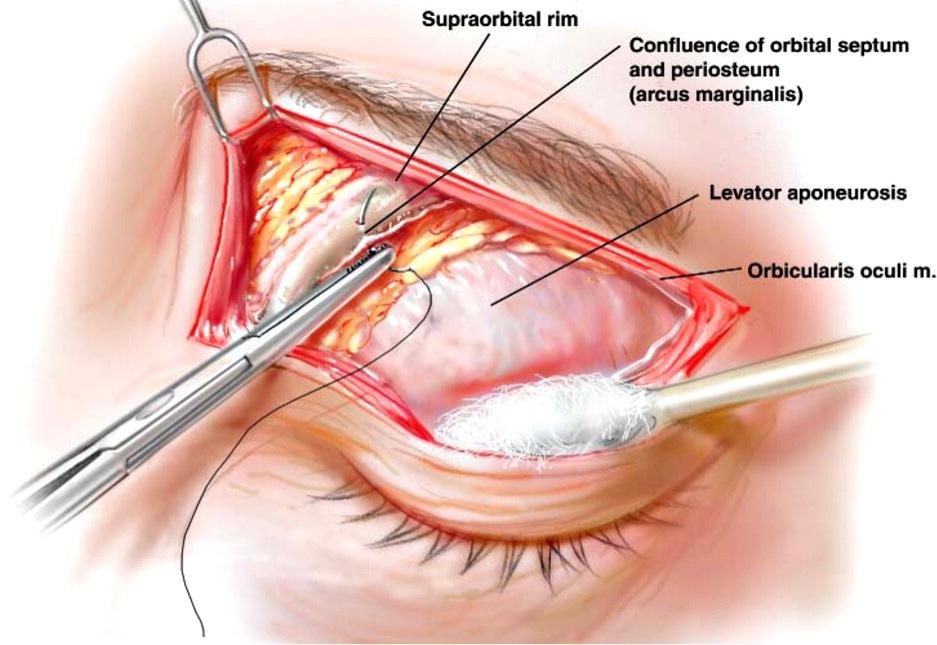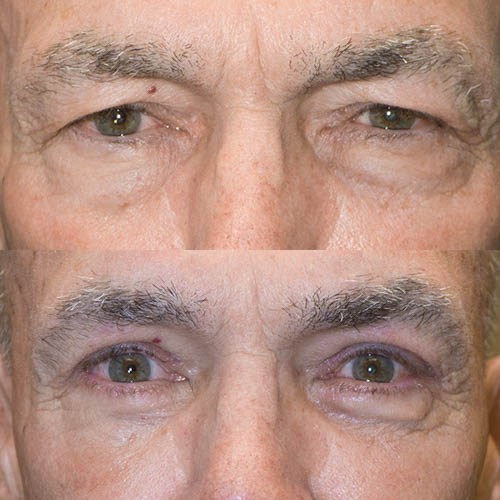Browpexy: What is it?
Browpexy has recently become much more commonly used by oculoplastic surgeons during eyelid surgery. Browpexy is done through the same eyelid crease incision made for a blepharoplasty (eyelid lift) or an eyelid ptosis repair (droopy lid repair). Once the skin is open, the surgeon dissects to the brow bone and then follows this plane beneath the eyebrow hairs. Deep stitches are then placed between the skin and the bone.

Browpexy surgical anatomy
Browpexy, which literally means “brow fixation”, holds the brows in a slightly higher position and keeps them from being pulled downward during eyelid surgery. For someone who needs a more subtle brow lift and doesn’t want a large incision in their forehead, browpexy may be the answer.

Before and 6 weeks after browpexy and upper eyelid blepharoplasty.
Pros and Cons of Browpexy:
The pros to browpexy include no additional incision, quick healing time, lower cost, and ability to have surgery under local anesthetic. The cons of browpexy include brow pain, which may last up to 8 weeks while sutures dissolve and limited improvement in brow height.
Why have a browpexy performed?
Browpexy is usually recommended for patients with brows which are pushing down on the eyelids, who otherwise wouldn’t be good candidates for a more extensive brow lift procedure. Many patients, especially men, don’t want an aggressive brow lifting procedure, but just need the brows to be lifted slightly off the eyelids during eyelid surgery. Browpexy in concert with eyelid lifting will improve the peripheral vision and reduce the heavy feeling over the eyes.
Is browpexy covered by insurance?
In most cases it is covered by insurance if it will improve your vision. We will determine this at the time of your consultation.
What other options are there for brow lifting?
I’ve written about brow lifting previously and we have a page on our site describing the other methods. A consultation in office will help us determine the best procedure for your situation.
